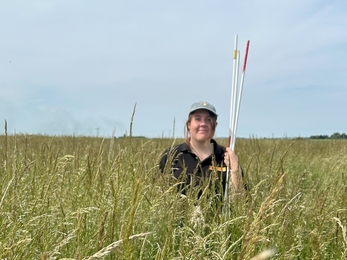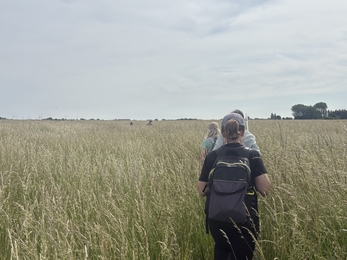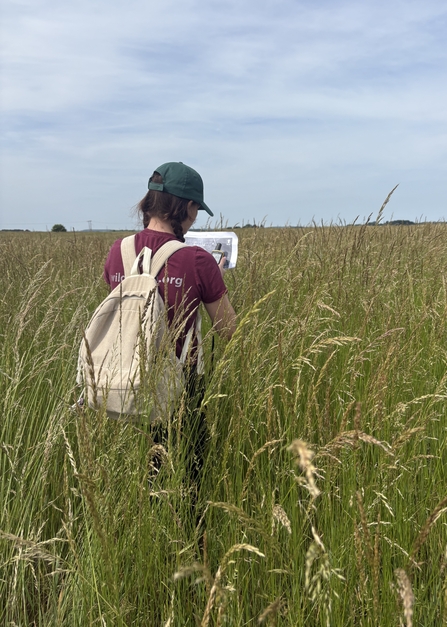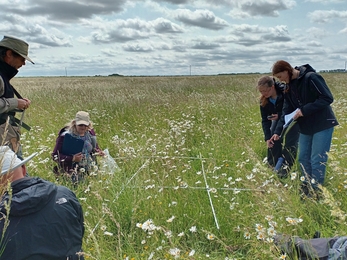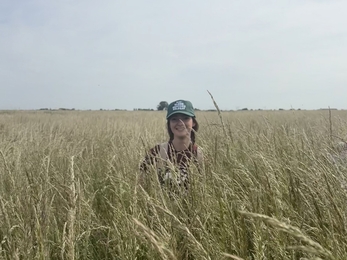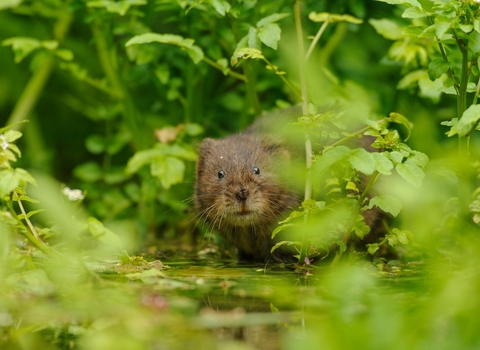Kaitlyn
This was one of my favourite days so far. It was on a hot day, and I have never done this survey before, so I was a bit worried at first, but as soon as I started to wade through grass as tall as me, I was ecstatic. Wind was swaying the field, making the grasses look alive, creating waves like a sea with butterflies bursting up out of the undergrowth. It was beautiful.
I started the day with no knowledge on grass identification, apart from saying “yep, that’s a blade of green grass”, to finishing the day being able to point at patches of vegetation and giving names to some of the grasses such as wall barley, Yorkshire fog, or barren brome. I even ended up taking a collection of grass species home with me where I spent the evening creating my own identification guide.

